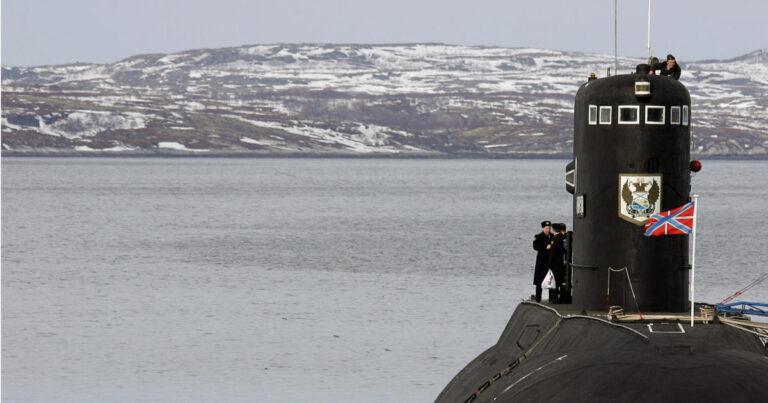Canada’s Defense Department said last week it plans to acquire 12 new submarines capable of operating under sea ice as part of efforts to bolster defenses along the country’s vast Arctic coastline.
“Our growing, modernized submarine fleet will help us detect and deter threats on all three coasts and protect Canadians and our interests,” Prime Minister Justin Trudeau said last week. NATO Summit in Washington.
Climate change is accelerating the melting of Arctic sea ice, slowly opening up new shipping routes that Western nations fear could be exploited by hostile powers for economic and military purposes.
The so-called Northern Sea Route has the potential to become the most efficient shipping route between Europe and Asia by 2050, the Canadian Department of National Defense said in a recent statement.
In addition to increased Russian activity in the Arctic, the Canadian military noted “an increasing number of Chinese multi-purpose research vessels and surveillance platforms collecting data on Canada’s north.”
China is rapidly Expanded its own underwater fleetThe Defense Ministry said Russian submarines continue to gather intelligence in the Arctic.
As reported by CBS News reportRussia has stepped up its military operations in the Arctic and is Hypersonic missilesA few years ago, a Russian natural gas tanker Experimental round trip Along the Northern Sea Route, which connects Western Europe with the Atlantic Ocean to East Asia.
“Russia is very keen to develop the Northern Sea Route,” Dmitry Gorenberg, a senior research scientist at the Center for Naval Analyses, told CBS News. He said Russia envisions the route through Russia’s exclusive economic zone as an alternative to southern shipping routes via the Suez and Panama Canals. The Northern Sea Route could cut travel time by up to 20 days.
Currently, the Northern Sea Route is only navigable during limited ice-free periods each year, but if the polar ice sheets continue to melt, it is estimated that the Northern Sea Route could become permanently ice-free within 20 years.
Canada’s latest defence policy, released in April, takes these looming changes into account, detailing plans to increase military presence in the Arctic to mitigate potential threats.
Canada’s new submarines will be used to “detect, track, deter and, if necessary, destroy adversaries” in Canadian waters, the Department of National Defense said in a statement.
“This new fleet will enable Canada to protect its sovereignty in a changing world and make valuable, advanced contributions to the security of our partners and NATO allies,” Canadian Defence Minister Bill Blair said in a statement.
Canadian defence policy notes that NATO is increasingly focused on Russia’s ability to project military power from the Arctic into the North Atlantic.
According to analyst Gorenberg, a growing Russian presence in the Arctic will have indirect implications for U.S. national security.
“This has major implications for the national security of the United States because of the potential threat to NATO and the alliance structure,” he said. A hypothetical Russian attack He pointed to allies Finland and Norway as examples that could draw Washington into the conflict.
This week, Canada, the United States and Finland announced a tripartite partnership to “continue building our respective nations’ best-in-class Arctic and polar icebreakers and other Arctic and polar capabilities,” saying the agreement is designed to “ensure like-minded countries adhere to international rules, norms and standards, and maintain peace and stability in the Arctic and Antarctic regions for future generations.”
Alexander Nemenov/AFP/Getty
The Canadian government says it is already discussing its needs with manufacturers and also plans to modernize its four existing submarines, purchased from Britain in 1998, over the next decade or so.
Canada currently falls short of NATO’s defense investment guideline of 2 percent of gross domestic product (GDP), but Blair said Canada expects to reach that benchmark by 2032 and that Canadian defense policy aims to increase defense investment to 1.4 percent of GDP by 2025.

